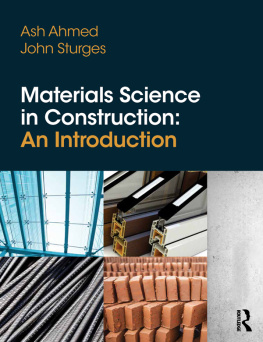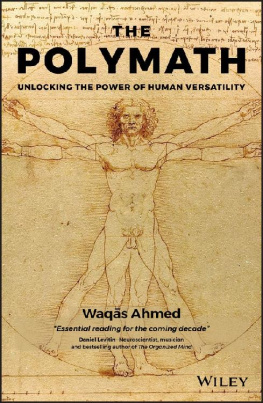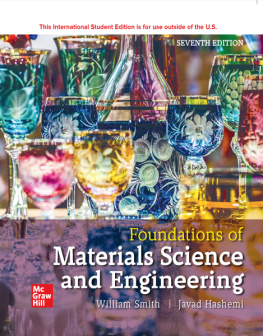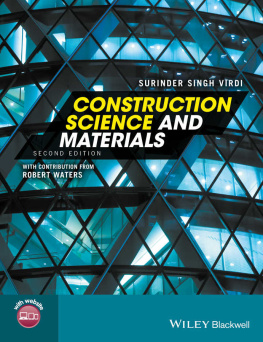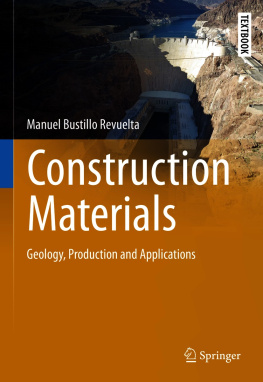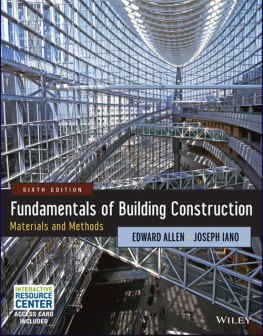Materials Science in Construction: An Introduction
Materials Science in Construction: An Introduction explains the science behind the properties and behaviour of constructions most fundamental materials (metals, cement and concrete, polymers, timber, bricks and blocks, glass and plaster). In particular, the critical factors affecting in situ materials are examined, such as deterioration and the behaviour and durability of materials under performance. An accessible, easy-to-follow approach makes this book ideal for all diploma and undergraduate students on construction-related courses taking a module in construction materials.
Ash Ahmed is a senior lecturer in construction materials science and module leader of several undergraduate and postgraduate materials science modules at the School of the Built Environment and Engineering at Leeds Beckett University. His research specialises in the evaluation of the mechanical and physical properties of commercial materials as well as novel sustainable materials in civil engineering.
John Sturges is a visiting professor at the School of the Built Environment and Engineering at Leeds Beckett University. His research interests include the environmental impact of materials, the energy efficiency of buildings and the whole area of sustainability and its impact on UK industry.
Materials Science in Construction: An Introduction
Ash Ahmed and John Sturges
First published 2015
by Routledge
2 Park Square, Milton Park, Abingdon, Oxon OX14 4RN
and by Routledge
711 Third Avenue, New York, NY 10017
Routledge is an imprint of the Taylor & Francis Group, an informa business
2015 Ash Ahmed and John Sturges; individual chapters, the contributors
The right of Ash Ahmed and John Sturges to be identified as authors of this work has been asserted by them in accordance with sections 77 and 78 of the Copyright, Designs and Patents Act 1988.
All rights reserved. No part of this book may be reprinted or reproduced or utilised in any form or by any electronic, mechanical, or other means, now known or heareafter invented, including photocopying and recording, or in any information storage or retrieval system, without permission in writing from the publishers.
Trademark notice: Product or corporate names may be trademarks or registered trademarks, and are used only for identification and explanation without intent to infringe.
Disclaimer: Every effort has been made to contact and acknowledge copyright holders. The authors and publishers would be grateful to hear from any copyright holder who is not acknowledged here and will undertake to rectify any errors or omissions in future printings or editions of the book.
British Library Cataloguing-in-Publication Data
A catalogue record for this book is available from the British Library
Library of Congress Cataloging-in-Publication Data
Ahmed, Ash.
Materials science in construction / Ash Ahmed and John Sturges.
pages cm
Includes bibliographical references and index.
1. Building materials. I. Sturges, John (Construction engineer)
II. Title.
TA403.A34 2015
ISBN: 978-1-85617-688-0 (pbk)
ISBN: 978-0-08-095850-7 (ebk)
Typeset in Bembo
by Keystroke, Station Road, Codsall, Wolverhampton
Contents
PART I
Basic principles: material structures and properties
Philip Garrison
PART II
Individual types and classes of materials
METALS
INORGANICS
Anton Fried
Anton Fried
ORGANICS
Martin Pritchard
PART III
In-service aspects of materials: durability and failure
PART IV
Conclusion: sustainability of materials
This chapter provides an overview of mankinds use of materials, comparing the use of materials in various industrial sectors, and making clear the point that construction is the worlds largest consumer of materials. It goes on to examine the importance of material properties in their selection for use, and outlines the various types and classes of materials and their importance in construction. A discussion of the service behaviour of materials and the problems of degradation and failure follows. Finally, in view of the current importance of sustainability, their environmental impact is stressed, and an outline of the books contents brings the chapter to a close.
Contents
The science and use of materials is central to all branches of industry, and as such is a subject of enormous importance. The range of materials we have at our disposal is enormous, and is being added to as the results of research and development are put to use week by week and month by month. The industries using materials include construction, aerospace, automobile, shipbuilding, white goods, electronics, railways, etc. Each industry has its own particular concerns about materials; in the aircraft business, the over-riding concern is with lightness and weight-saving, with cost being secondary to this. This is well illustrated at the present time with the advent of the Boeing 787 Dreamliner, which is pioneering the use of fibre-reinforced composite materials instead of the usual aluminium alloys for the construction of the airframe. Although aluminium is already a light metal, its use is being abandoned in favour of fibre-reinforced polymeric materials which are lighter still.
In the automobile industry, the luxury car sector currently is turning to the use of aluminium alloys for body structures in place of the traditional steel, and again the driver for this is weight-saving, with the consequent saving in running (fuel) costs. This may well be the precursor for the wider, progressive replacement of steel with light metals or reinforced polymers. In the construction industry, the leitmotif is most often low cost, i.e. weight-saving is not usually an issue, whereas keeping costs down to a minimum is very important. Having said this, in the construction of very tall buildings, engineers do take steps to save weight, usually in the construction of the upper floors of skyscrapers, in an effort to reduce the enormous loads that need to be borne by their foundations. Steel and concrete are such popular materials in construction; steel possesses high stiffness, high tensile and compressive strength and good ductility, with prices starting at around 500 per tonne, and concrete represents the cheapest way to buy one unit of compressive strength. Both are excellent value for money and this is most important in construction.
Each industry has its own preoccupations with the types of materials used. In most cases the products made will be created in a well-regulated, factory environment. In construction, on the other hand, the product is created on site in a less well-regulated environment, and this factor must be borne in mind. In most industries materials can be tested before they are used, to ascertain their quality and fitness for purpose. In construction, however, concrete falls outside this rule as it is made and used on site in one operation. If serious mistakes are made, the defective piece of concrete may have to be broken out and replaced. Concrete is the most widely used material of all, with over 12 billion tonnes being used worldwide each year, and yet it differs from all other important materials in not being able to be tested before it is used.
Construction also uses a lot of timber, a traditional construction material which has been used for centuries. We often lose sight of the fact that timber is a smart material when it is growing as part of a tree. In a growing tree, timber can sense where compressive stresses are increasing due to weight increase brought about by the growth of new timber, and is able to respond by increasing the size of branches that are bearing the increased weight. So far engineers have not been able to produce such a remarkable material.

